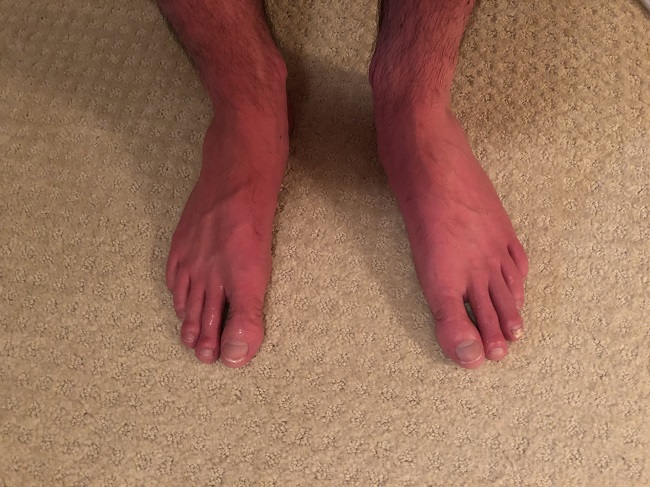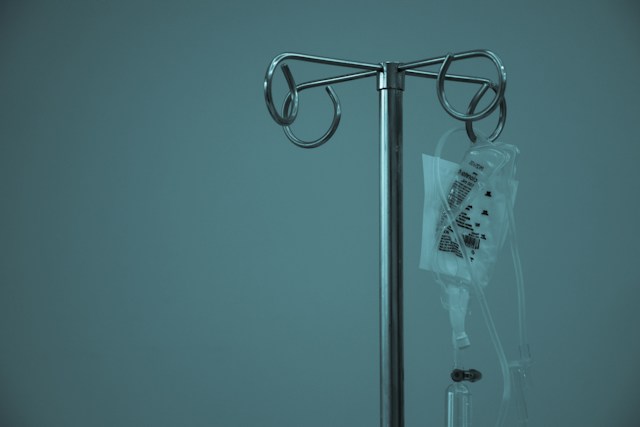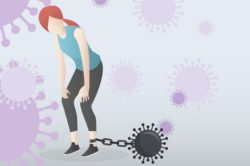Earlier this year, Hormones Matter published two posts suggesting that thiamine could be helpful in treating COVID-19, one by Dr. Lonsdale focused on the role of thiamine in facilitating the energy metabolism needed to fight disease and one by me focused on thiamine’s potential to increase oxygen levels through the inhibition of carbonic anhydrase isoenzymes. Since the publication of these posts, new evidence has emerged that further supports the potential benefits of thiamine for COVID-19. This post reviews the new evidence and argues for the accelerated execution of a randomized controlled trial to evaluate the potential of thiamine to slow the progression of COVID-19 in newly diagnosed outpatients.
Thiamine and COVID-19: New Evidence
The most important new data are: (1) a study which found that high-dose thiamine lowers the Th17 cell proinflammatory response believed to be associated with the COVID-19 cytokine storm and (2) data on mortality rates from two medical centers using the MATH+ protocol to treat COVID-19 hospitalized patients. I summarize each in turn.
- Modulation of Th17 proinflammatory response. Through a creative combination of in vivo and in vitro experiments, the authors of this study demonstrate that thiamine interrupts the cycle of inflammation believed to play a role in the cytokine storm associated with COVID-19, leading to reduced levels of IL-17 pro-inflammatory cytokines and increased levels of the anti-inflammatory IL-22 cytokines. They determined that a range of 74-474 mg daily of thiamine would achieve the desired response in COVID-19 patients. Notably, this study did not involve patients with COVID-19, but rather patients with alcohol use disorder, who also tend to experience a pro-inflammatory state characterized by elevated IL-17 levels. So thiamine’s effectiveness in preventing and treating COVID-19 still needs to be tested in a clinical setting. The study is in the pre-print phase only, and is currently under review by a peer-reviewed journal. This video by Dr. Mobeen Syed provides a helpful explanation of the study and its context.
- Reduced COVID-19 mortality rates in two hospitals using the MATH+ protocol. The MATH+ protocol for COVID-19 combines a range of substances to treat hospitalized COVID-19 patients: Methylprednisolone (a steroid), Ascorbic Acid (Vitamin C), Thiamine, Heparin (a blood thinner) and several additional components, including melatonin, zinc, vitamin D, atorvastatin and famotidine. Grounded in the experience Dr. Paul Marik and his collaborators gained in treating patients with sepsis, and other emerging evidence, the protocol has been endorsed by a group of physicians known as the Front Line COVID-19 Critical Care Alliance. The protocol is intended to be used as soon as hospitalized COVID-19 patients meet the criteria for oxygen supplementation. Dr. Marik’s version of the protocol, the EVMS Critical Care COVID-19 protocol, also includes recommendations for treatment at earlier phases of the disease and for prevention.
The MATH+ protocol has not been evaluated through a randomized controlled trial, but the authors have published a detailed scientific review of the protocol as well as data on the mortality of patients treated with the protocol. According to their data, through July 20, 2020, the two hospitals using the protocol (United Memorial Medical Center, in Houston, TX, and Sentara Norfolk General Hospital, in Norfolk, Virginia) reported mortality rates for hospitalized COVID-19 patients of 4.4 and 6.1 percent, respectively. This compares with mortality rates for hospitalized COVID-19 patients of 15.6 to 32.0 percent reported in other studies. Since this is not a formal controlled study, it is possible that explanations other than the use of the MATH+ protocol could account for the sharply lower mortality rates at the Houston and Norfolk hospitals. Nevertheless, the comparatively low mortality rates of the hospitals using the MATH+ protocols represent very promising results.
Other recent articles suggesting a role for thiamine in treating COVID-19 include: an article on the potential role of B vitamins in treating COVID-19, a review of the potential of vitamins to treat COVID-19, and an article focused on famotidine, melatonin and thiamine. Many of the studies on the potential role of thiamine in treating COVID-19 are summarized in this review. This article focuses on the potential of the carbonic anhydrase inhibitor acetazolamide to prevent kidney damage from COVID-19. As noted in my earlier post, an in vitro study suggests that thiamine may be nearly as effective as acetazolamide in inhibiting carbonic anhydrase isoenzymes.
Potential Mechanisms Linking Thiamine Deficiency to COVID-19
The exact mechanism through which thiamine may be contributing to the results discussed above is unclear. One potential pathway is thiamine deficiency, which is fairly common in severely ill patients and discussed by the authors of both the Th17 research paper and the scientific review of the MATH+ protocol. As the scientific review of the MATH+ protocol observes:
The human adult can store around 30 mg of thiamine in muscle tissue, liver and kidneys, however, these stores can become depleted in as little as 18 days after the cessation of thiamine intake. A thiamine deficiency syndrome, beriberi, bears a number of similarities to sepsis, including peripheral vasodilation, cardiac dysfunction, and elevated lactate levels. In critical illness, the prevalence of thiamine deficiency is 10–20% upon admission and can increase up to 71% during ICU stay, suggesting rapid depletion of this vitamin.
At the same time, however, the authors noted that “[b]ased on limited data, no association was detected between thiamine levels, markers of oxidative stress and mortality” in two studies.”
There could also be benefits in using thiamine as part of a combination protocol with other agents. For example, the authors of the MATH+ scientific review note that the combined administration of thiamine and steroids may help to enhance the anti-inflammatory properties of steroids. “In experimental rheumatoid arthritis, thiamine increased the ability of corticosteroids to suppress production of TNF-á and IL-6.”
An intriguing role for thiamine in countering the inflammation associated with some viruses is raised by the authors of the paper on the Th17 proinflammatory response. They cite in vitro research which found, using feline models that some viruses rely on a thiamine transport protein in the disease cycle. In theory, occupying the thiamine transporter by providing thiamine to thiamine-deficient individuals could inhibit a virus which relied on this same transporter. While not specifically addressed in the paper, this raises the question of whether the use of high doses of thiamine in individuals without a deficiency could have a similar effect in interrupting the disease cycle of a virus that depends on the thiamine transporter.
Neither the Th17 study nor the scientific review of the MATH+ protocol mention thiamine’s role as a carbonic anhydrase inhibitor, but it is noted in two of the other articles referenced above as potentially contributing to reduced hypoxia. This pathway needs further study. Carbonic anhydrase inhibitors produce carbon dioxide, which can help to reduce the hypoxic conditions that produce inflammation. One way is through increased respiration. Several other mechanisms for carbon dioxide’s protective effects are summarized in this article:
Numerous other mechanisms potentially exist whereby CO2 protects the tissues from hypoxic-ischemic damage. An increase in blood pCO2 shifts the oxygen hemoglobin dissociation curve to the right (Bohr effect), the result of which is a decrease in the affinity of hemoglobin for oxygen. Therefore, at the capillary level, CO2 would tend to raise pO2, increase the gradient for any given oxyhemoglobin saturation, and facilitate transfer of O2 to the tissue for oxidative processes. CO2 might also preserve cardiac function during systemic hypoxia. The inhibition of systemic lactate production by CO2 inhalation during hypoxia would serve to maintain optimal cardiovascular function.
Research Needed
Given the severity of the COVID-19 pandemic, and the expected challenges associated with the combined burden of flu and COVID-19 on hospitals this fall and winter, it is important to test all plausible treatment avenues for COVID-19. The data reviewed in this post add to the evidence base supporting a randomized controlled trial (RCT) to test whether thiamine – alone or in combination with other agents – could help to slow the progression of COVID-19 and/or mitigate the cytokine storm associated with some of its worst effects.
Cognizant of the prevailing view that RCTs are the best way to build evidence about the effects of medical treatment, the authors of the scientific review of the MATH+ protocol specifically discuss their decision to forgo an RCT. They argue that the clinical value of each of the treatments included in their protocol has been well established and that they therefore do not have the clinical equipoise (“the belief by the investigator that neither intervention in the control or experimental group is more effective”) necessary to justify a trial. In essence, they argue that it would be unethical to deprive patients facing a deadly disease of treatments they believe to be effective. Instead, they are pursuing a different research approach: “the formation of a patient registry to measure and compare the outcomes of patients treated with MATH+, not only against the prevailing ‘supportive-care only’ strategy, but also against other novel proposed treatment approaches employed throughout the country and world.”
Even if the necessary clinical equipoise is not available to justify an RCT in hospitalized patients, I would argue that there IS sufficient clinical equipoise to justify an RCT testing the effects of thiamine and other agents in slowing the progression of COVID-19 in newly diagnosed outpatients. While there is a theoretical basis for believing thiamine could be helpful, we won’t know whether and to what extent it is helpful in a real-world setting until a trial is done. One approach would be to test a combination therapy that relies on oral versions of many of the substances used in the MATH+ protocol, such as vitamin C, thiamine, heparin or another blood thinner such as aspirin, vitamin D, melatonin, famotidine, and zinc. Due to concerns about possible harms resulting from the administration of a steroid too early in the progression of COVID-19, it would likely be advisable to omit a steroid from the earliest stages of treatment. The rationale for avoiding steroids in non-critically ill COVID-19 patients is discussed in the September 2, 2020 World Health Organization guidelines on the use of corticosteroids for COVID-19.
Many of these substances are already being evaluated in trials to assess their effectiveness in treating COVID-19, as reflected in the ClinicalTrials.gov database. But not thiamine.
What are we waiting for?
We Need Your Help
More people than ever are reading Hormones Matter, a testament to the need for independent voices in health and medicine. We are not funded and accept limited advertising. Unlike many health sites, we don’t force you to purchase a subscription. We believe health information should be open to all. If you read Hormones Matter, like it, please help support it. Contribute now.
Yes, I would like to support Hormones Matter.
Image by Alexas_Fotos from Pixabay.















A new study found that the administration of thiamine was associated with a 51 to 55% reduction of ICU and hospital mortality of patients critically ill with COVID-19 and a reduction of 81% in the incidence of thrombosis during the ICU stay. These associations were statistically significant. The study, which used propensity score matching to identify similar individuals, is currently in preprint only and is under review for publication in a peer-reviewed journal. The median dose of thiamine was 100 mg daily and the median duration of thiamine administration was 7 days.
Al Sulaiman, K et. al. Evaluation of Thiamine as Adjunctive Therapy in COVID-19 Critically Ill Patients: A Multicenter Propensity Score Matched Study. Preprint posted 4/13/2021, under consideration by Critical Care. https://www.researchsquare.com/article/rs-400565/v1
Check out @NiacinIsHealth on twitter… Niacin is the causative antidote … other Bs important too, but you’ll see .. it’s all about niacin
Some more updates:
The Vatsalya paper demonstrating that high-dose thiamine tamps down the Th-17 pro-inflammatory process believed to be associated with the COVID-19 cytokine storm has now been published in a peer reviewed journal, Frontiers in Pharmacology. The link is here: https://www.frontiersin.org/articles/10.3389/fphar.2020.598128/full .
Interestingly, the Th-17 pro-inflammatory process also plays a role in a number of autoimmune disorders. Waite, J and Skokos, C.D. Th17 Response and Inflammatory Autoimmune Diseases, International Journal of Inflammation, vol. 2012, Article ID 819467, 10 pages, 2012. https://doi.org/10.1155/2012/819467. One possible connection: increases in Il-17 cytokines seem to be triggered by an increase in hypoxia-induced factor 1 (HIF-1). Nutsch, K and Hsieh. C. When T Cells Run Out of Breath: The HIF-1a Story. Cell 146, September 2, 2011. DOI 10.1016/j.cell.2011.08.018 . Increases in HIF-1 are seen in a number of autoimmune diseases, including rheumatoid arthritis, inflammatory bowel disease, psoriasis, systemic sclerosis and multiple sclerosis. Deng W, Feng X, Li X, Wang D, Sun L. Hypoxia-inducible factor 1 in autoimmune diseases. Cell Immunol. 2016;303:7–15. doi:10.1016/j.cellimm.2016.04.001.
Given the hypoxia induced by COVID-19, it is perhaps not surprising that there might an increased in HIF-1, leading to increased levels of IL-17, which has a cascading effect in triggering other pro-inflammatory processes and possibly contributing to the COVID-19 cytokine storm. An interesting article posted on Medium (not peer reviewed) describes some of the research suggesting that COVID-19 may have an autoimmune component. https://elemental.medium.com/covid-19-is-looking-more-and-more-like-an-autoimmune-disease-b6c563f8da24
A few updates:
(a) An updated version of the Clinical and Scientific Rationale for the “MATH+” Hospital Treatment Protocol for COVID-19 has been published in the Journal of Intensive Care Medicine, at this link: https://journals.sagepub.com/doi/abs/10.1177/0885066620973585
(b) The first (to my knowledge) randomized trial of high-dose thiamine for fatigue has been published. The trial, which focused on patients with IBD and severe chronic fatigue, found high-dose thiamine to be effective in improving the patients’ symptoms. More info here: https://onlinelibrary.wiley.com/doi/10.1111/apt.16166
There is a very strong physician bias, simply because they irrevocably believe that vitamin deficiency in the United There is a strong physician bias against the idea of vitamin deficiency in the United States, because there is a rooted idea that “vitamin deficiency disease is conquered. What they do not understand is that thiamine, and particularly its derivatives, are being used as “drugs”. It is nothing to do with simple vitamin replacement. The enzymes that require thiamine have been deprived of it for so long that it can be expected that they have deteriorated “physically” in their metabolic responsibility. The cofactor has to be used in megadoses in order to stimulate the enzymes back into their normal function. Of course, this is a hypothesis formulated to explain the “miraculous” effect that results clinically. But until a researcher becomes interested in the clinical results and begins to research it, it will remain as the “concept of misguided physicians and health workers”. I have the rooted idea that a biochemically- minded clinician in an academic position will eventually pick up the idea and perform further research.
This is a very intriguing post. The statement that thiamine decreases the concentration of pro inflammatory IL-17 cytokines and increases the anti-inflammatory IL 22 cytokines is crucial in understanding the proposed administration of thiamine. Relatively recent research has shown that inflammation is controlled by the vagus nerve in its contact with the spleen. The vagus nerve is part of the parasympathetic system and its neurotransmitter is acetylcholine. Thiamine is necessary for the citric acid cycle and the production of the acetyl group that joins with choline to make the neurotransmitter. A reduction of acetylcholine would therefore affect this neurological control of inflammation, thus explaining the therapeutic potential of thiamine. Thiamine deficiency would also be responsible for lowering the arterial oxygen concentration reported in patients with Covid 19
Can you also address Ivermectin as a potential effective treatment to all RNA virus infection negating the need for vaccine?
Thanks for highlighting Ivermectin. I understand that there are multiple trials exploring the use of Ivermectin for COVID-19, but have not yet seen the results so am unable to comment.